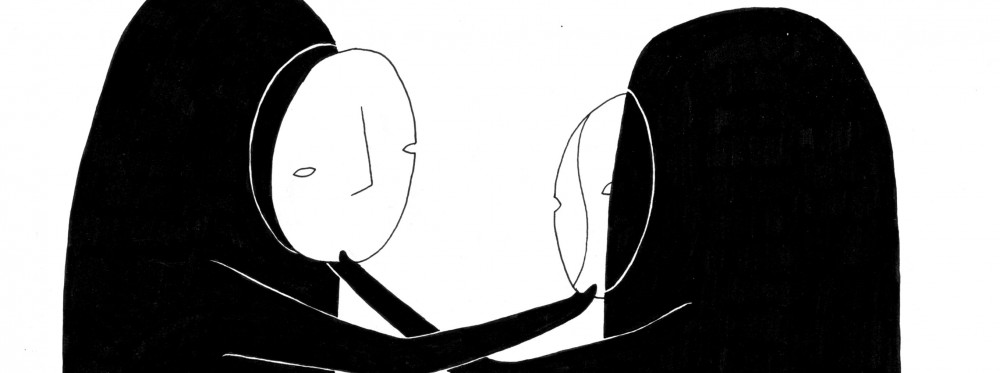|
In this project we intend to use transdisciplinary work to act as a cultural agitateur. According to Stéphan Hessel, indifference and apathy are the biggest threats to social and political engagement of youth. By using art as a form of intervention, we wish to disclose the dangers of the lack of ideology and political awareness. As described in the famous poem of Martin Niemöller “First they came…”, the absence of individual commitment to collective
responsibilities can have a pernicious effect on the sense of agency and empowerment of a given community. Coming from different countries and political backgrounds, each of the group members hopes to bring about their own experiences. Through critical discussion and improvisation the definitions of civic and political engagement are discussed and revised in an open-ended research process.
The role of artists and art in the collective construction of reality of today’s youth is our main working theme. In our research process we will explore how each field interprets and contributes to political engagement (for example: the importance of music in social revolutions; the relevance of street art as a form of anonymous social statement; the role of dance in the use of the body as protest). We will use as a methodology the direct interexchange of skills, ideas and processes of creation associated to artistic expression. Each member of the group will not be limited to assume a role inside his/her discipline, but the group as a whole will explore the possibilities that emerge from the convergence of areas. We address questions such as: What does it mean to be young? Why are youth movements focusing on the need to be outraged? Why protests and demonstrations are usually focused on the need to destroy and not build? Can artists express the concerns of a generation? What is the artist’s role in social engagement? In order to answer your question we start by explaining that our methodology seeks, first of all, to develop a true transdisciplinary work. Transdisciplinarity is, in itself, a research strategy that hopes to cross the borders of each discipline in order to create a holistic approach. In this way, we hope to go beyond the interdisciplinary work. This kind of approach assumes that each discipline gives an independent contribution to the work theme. For example, when developing a performance about the relationship between art and protest, the dancers would work on this theme to create choreography on protest, the plastic artist to create a painting on protest and so forth. This perspective assumes collaboration between disciplines but not a merge of concepts and research methodologies. On the other hand, transdisciplinary approach aims to merge techniques, strategies and artistic expressions in a unified work methodology.
Therefore, when the musicians would engage themselves in composition, all of the group members participate. An example of this type of work was recently done by artist Marina Abramovic with the Paris Opera Company and the choreographer Sidi Larbi Cherkaoui. A common concept was created by the artist and the choreographer to create a performance that embodies, on the same level, all the contributions from different disciplines.
We wish to develop two kinds of research: one inside the group to develop concrete themes and working questions; the other by trying out the explorations made within the group in the public space.
Regarding the first topic, we will explore the questions already stated in our concept as a group. Afterwards, those members who share a common discipline (i.e., dancers, painters, etc.) will meet to create a project or activity for the entire group that employs the techniques of their specific field. For example, Ursula Meyer, a painter, could propose that each member of the larger group improvise a painting based on our discussion of the „definition of work.“ The emphasis here lies not on developing or critiquing the skill set needed within a specific discipline that is foreign to a given group member, but on what sort of new perspectives this sort of „outsider art“ can provide those who are well equipped within a specific discipline. In the above example, Ursula would then use the work of the entire group as a source of reflective inspiration for her own contribution to the final performance/project.
The second form of resear ch incorporates direct interventions and performances by the entire group in public space. We get together and define a theme for joint improvisation. We would perform in various places in the area (i.e., public plazas, parks, stores, etc.) and simply see how people react to them. We would also document the art interventions as research material. We then revisit the conversation. Our method, therefore, uses a dialectical form of reflection on the individual and corporate levels to incite an evolving relationship between our themes and our practices by way of antagonism, both unto ourselves and projected onto the larger community.
Through the gathering of all of this material we will select one main theme to develop a performance to be presented as a result of our LAB. Therefore, our financial needs have to do with production (for example, materials for painting; sound equipment), documentation (Photos, videos) and travel costs (as we intend to stage our public actions also in areas outside
the Ruhrgebiet). As far as rehearsal space is concerned, we believe the conditions offered by Folkwang are sufficient for our needs.
|
